Wildlife watching is exciting and affordable. You don’t need lots of money to enjoy it. Many places in the USA offer great wildlife watching on a budget.
These spots aren’t crowded, allowing you to quietly observe animals in their natural settings.
From birds and bears to sea turtles, you can see a variety of wildlife. This blog will guide you through ten hidden gems for budget wildlife watching. We’ll share tips on how to plan your visit, what gear to bring, and how to watch wildlife safely.
Our goal is to help you have an amazing experience without spending too much. We’ll also ensure you understand how to respect and protect nature while you explore.
Get ready to enjoy the thrill of seeing wildlife up close, all without straining your wallet!
1. Valley Of Fire State Park, Nevada

Optimal Viewing Seasons: Cooler Months of Fall and Winter
Desert bighorn sheep are adapted to the arid, rocky environments of the desert. They are easily recognized by their robust, spiraled horns.
Living mainly on a diet of sparse desert vegetation, these sheep are adept climbers, navigating steep, rocky terrains with ease.
Valley of Fire State Park is not just a wildlife sanctuary; it’s a historical canvas painted with ancient petroglyphs by Native Americans.
These artifacts, some dating back more than 2,000 years, offer a glimpse into the past lives of the area’s earliest inhabitants.
Visitor Guidance And Safety
- Use binoculars for a close-up view without disturbing the sheep.
- Keep a respectful distance—these are wild animals, not pets.
- Minimize noise; loud sounds can frighten wildlife.
- Follow all park guidelines to preserve this historic and natural treasure.
2. Alligator River National Wildlife Refuge, North Carolina

Ideal Times For Wildlife Viewing: Spring through Early Fall
Alligator River National Wildlife Refuge is a sanctuary for diverse wildlife, notably including one of the largest populations of black bears on the eastern seaboard.
Alongside bears, the refuge is a critical habitat for the endangered red wolves, making it a unique destination for wildlife enthusiasts.
The refuge spans over 152,000 acres, featuring a mix of wetland and forest environments. This diverse habitat supports not only mammals but also an impressive array of bird species.
Historical aspects of the refuge include its role in conservation efforts, particularly in the recovery of red wolves and efforts to maintain the delicate balance of native species.
Visitor Tips And Conservation Etiquette
- Maintain a safe distance from wildlife; use zoom lenses for photography.
- Avoid feeding animals to prevent unnatural behaviors.
- Keep to designated trails to protect natural habitats.
- Respect the ongoing conservation work by adhering to all refuge rules.
3. Malheur National Wildlife Refuge, Oregon
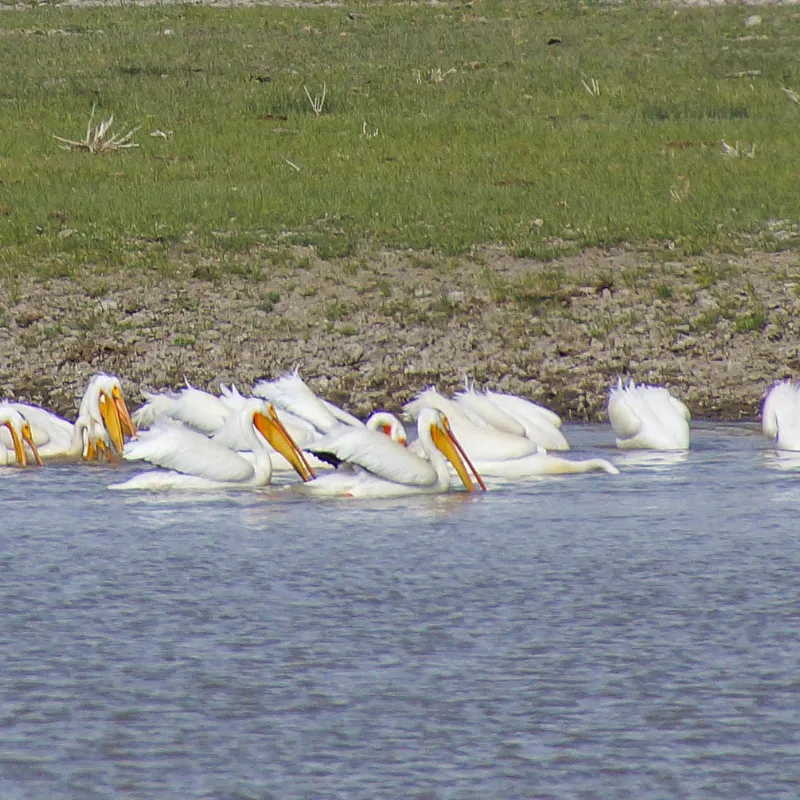
Best Seasons For Birdwatching: Spring and Autumn Migration Periods
Malheur National Wildlife Refuge serves as a critical stopover for hundreds of bird species during their migration routes, particularly waterfowl and shorebirds.
This refuge is renowned for its role in bird conservation and offers birdwatchers a unique opportunity to view rare and migratory species in their natural habitat.
Encompassing over 187,000 acres, Malheur’s landscape varies from marshes to grasslands, providing ideal conditions for diverse bird populations.
Historically, the refuge was established in the early 1900s and has been a pivotal site for bird conservation efforts, playing a significant role in the protection of several endangered species.
Guidelines For Visitors And Birdwatching Ethics
- Utilize binoculars or scopes to observe birds without causing stress.
- Stay on marked paths to minimize disturbance to the habitat.
- Keep noise levels low to not disrupt the birds.
- Respect wildlife by following the refuge’s conservation rules.
4. Pawnee National Grassland, Colorado
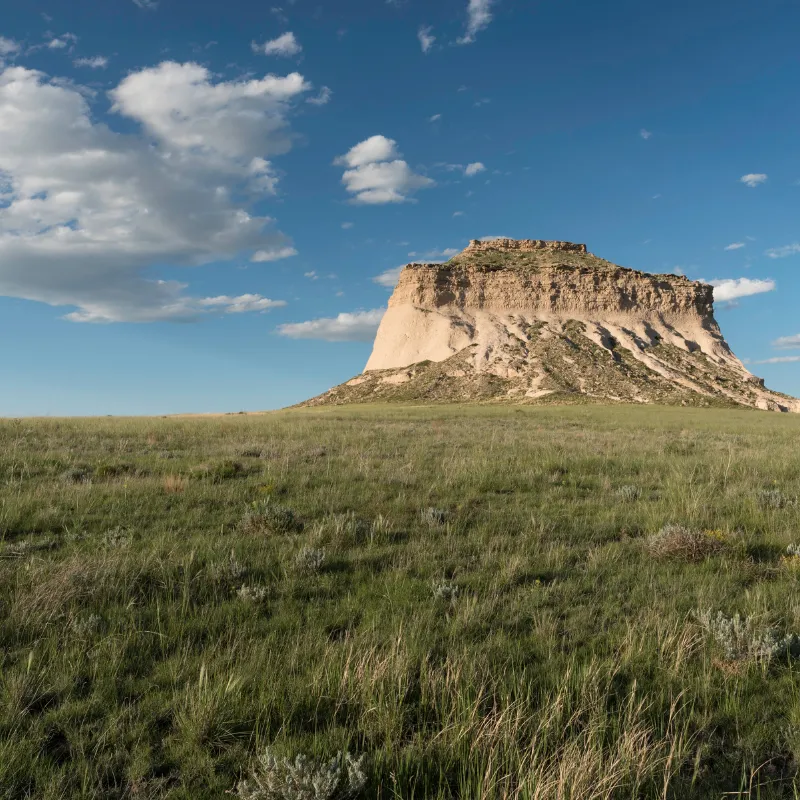
Ideal Season For Wildlife Spotting: Late Spring to Early Fall
Pawnee National Grassland is a lesser-known treasure that offers expansive views and opportunities to observe prairie wildlife, such as pronghorns and various species of raptors.
This area is distinguished by its wide-open spaces and minimal human interference, providing a serene environment for wildlife and visitors alike.
Covering about 193,060 acres, Pawnee’s landscape of rolling grasslands and unique rock formations supports a rich ecosystem.
Historically, this land has been shaped by both natural forces and human activities, including ranching and conservation efforts, which have contributed to its current state as a national grassland.
Wildlife Watching Tips And Respectful Practices
- Use a good pair of binoculars to watch animals from a safe distance.
- Avoid approaching wildlife; always observe from afar.
- Stay on designated trails to protect the natural environment.
- Be mindful of the grassland’s rules to help maintain its pristine condition.
5. Elkhorn Slough National Estuarine Research Reserve, California
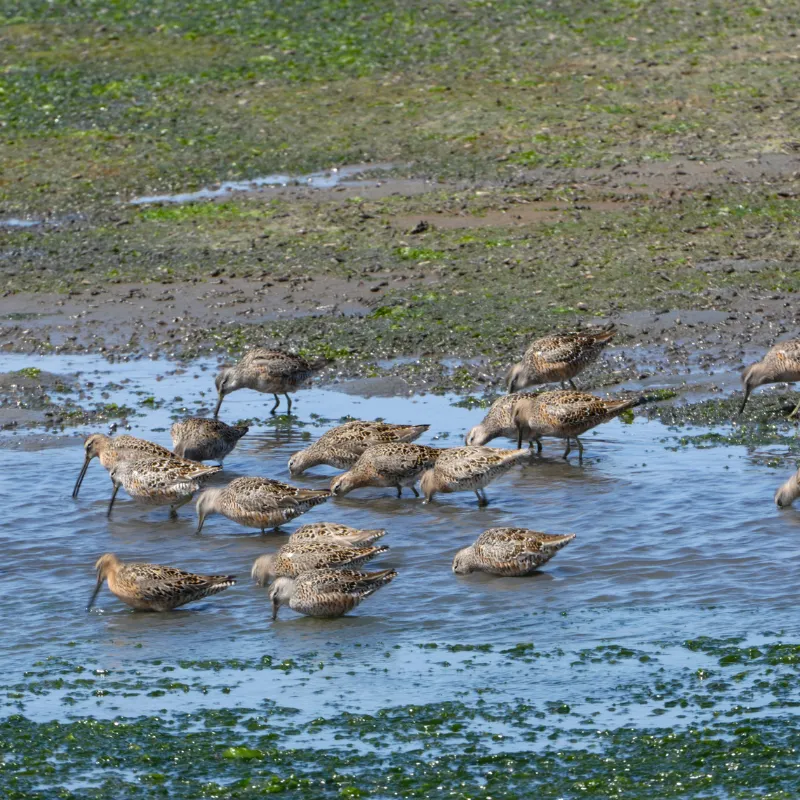
Prime Viewing Times: Year-Round, Especially Spring and Summer
Elkhorn Slough National Estuarine Research Reserve is a vital sanctuary for sea otters, offering exceptional opportunities to watch these playful marine mammals in their natural coastal environment.
The reserve also supports a diverse array of other marine life and birds, making it a hotspot for wildlife enthusiasts.
Spanning approximately 1,700 acres, the reserve includes salt marshes, mudflats, and tidal creeks, which create a rich habitat for species such as sea otters, seals, and countless waterfowl.
The history of Elkhorn Slough involves ongoing conservation efforts to protect and study the unique ecosystems found here, crucial for maintaining the area’s biodiversity.
Responsible Wildlife Watching Practices
- Observe sea otters and other wildlife using binoculars or scopes.
- Stay on marked trails and viewing platforms to minimize disturbance.
- Keep noise to a minimum to avoid startling the animals.
- Adhere to all reserve guidelines to support conservation initiatives.
6. Cache River State Natural Area, Illinois
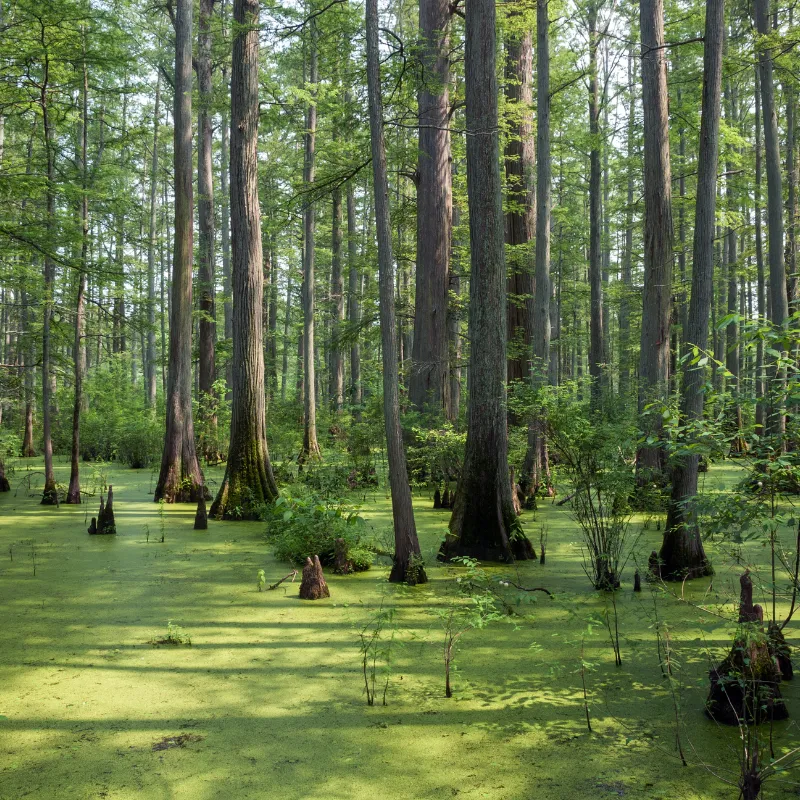
Best Time For Wildlife Encounters: All Year, Peak in Spring and Fall Migrations
Cache River State Natural Area offers a unique blend of forested and wetland environments that attract a variety of wildlife, especially diverse bird species. This area is a quieter destination, ideal for those seeking solitude while observing nature.
Spanning over 14,000 acres, the natural area includes cypress-tupelo swamps reminiscent of southern ecosystems, providing a rare northern habitat for southern flora and fauna.
The history of the Cache River area involves extensive restoration efforts to preserve its ancient wetlands, which are critical for waterfowl and migratory birds.
Guidelines For A Respectful Nature Experience
- Use optics like binoculars to enjoy wildlife from a distance.
- Remain on designated paths to protect sensitive habitats.
- Keep quiet to enhance your chances of seeing more wildlife.
- Follow the area’s regulations to aid ongoing conservation efforts.
7. Bosque del Apache National Wildlife Refuge, New Mexico
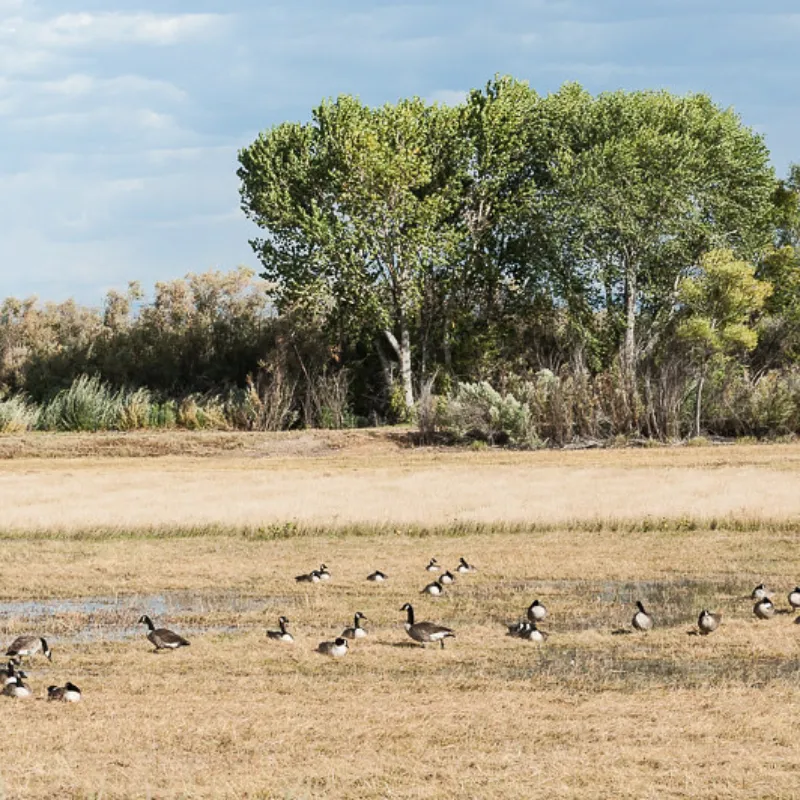
Optimal Viewing Period: Late Fall to Early Winter
Bosque del Apache National Wildlife Refuge is renowned for its annual spectacle of sandhill cranes and snow geese that blanket the area each winter.
This refuge serves as a crucial pit stop for thousands of migrating birds, offering them and other wildlife a sanctuary in the arid New Mexico landscape.
Covering about 57,331 acres, the refuge encompasses a mix of wetlands, farms, and woodlands, meticulously managed to mimic natural flooding and feeding patterns which support a diverse array of wildlife.
The establishment and management of Bosque del Apache are vital chapters in the history of U.S. wildlife conservation, highlighting successful efforts to provide habitats that support massive migrations.
Wildlife Observation Ethics And Tips
- Utilize long-range lenses or binoculars for a closer look without intrusion.
- Adhere to the refuge paths and viewing areas to avoid disrupting habitats.
- Maintain silence or speak softly to prevent disturbing the wildlife.
- Respect all refuge rules to ensure the safety and preservation of both wildlife and their environments.
8. Canaveral National Seashore, Florida
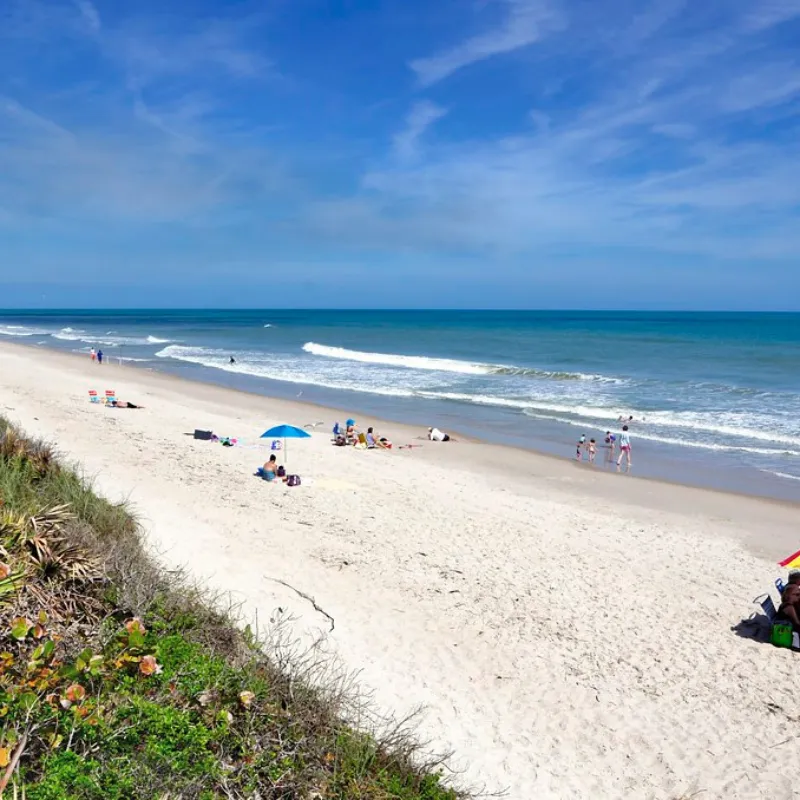
Best Times For Viewing: Late Spring through Early Fall
Canaveral National Seashore is a prime location for observing nesting sea turtles along Florida’s coast.
This tranquil stretch of beach offers visitors the unique opportunity to witness sea turtles in their natural habitat as they come ashore to lay eggs.
The park spans 58,000 acres, including a barrier island, dune, and ocean ecosystem. It’s not just a haven for sea turtles; diverse bird species and marine life also thrive here.
Historically, Canaveral has been integral to both native cultures and modern conservation efforts, protecting this untouched coastal environment.
Ethical Wildlife Watching Practices
- Keep a respectful distance from nesting sites and sea turtles.
- Use red-tinted flashlights at night to avoid disorienting turtles.
- Move quietly and calmly around the beach to avoid stress on wildlife.
- Follow all park regulations to support ongoing preservation work.
9. Klamath Basin National Wildlife Refuges, California/Oregon
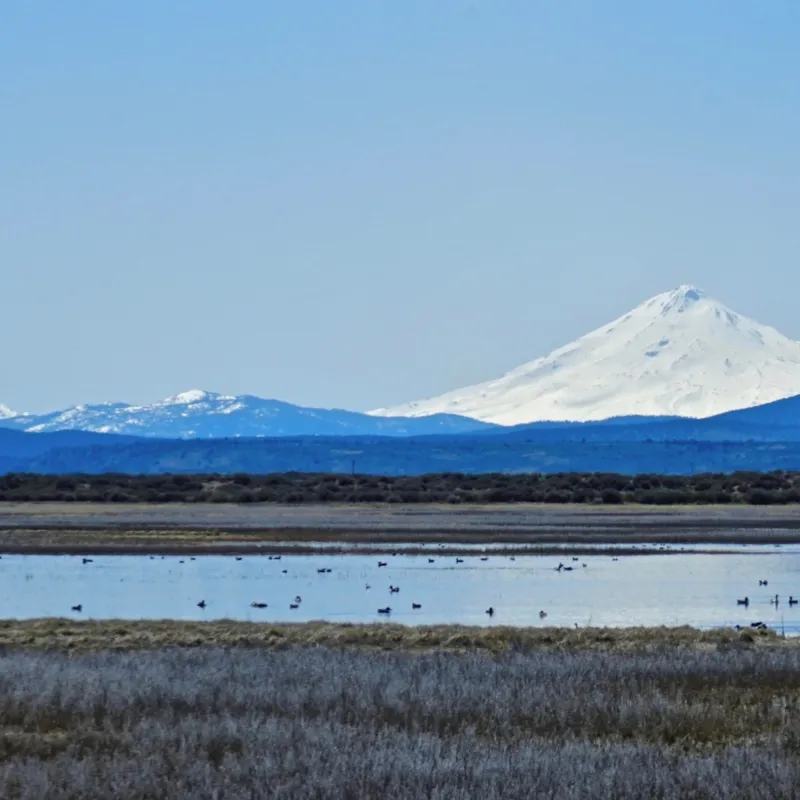
Ideal Seasons For Birdwatching: Winter and Early Spring
Klamath Basin National Wildlife Refuges are a network of refuges that form a crucial habitat for migratory birds and local wildlife.
Known particularly for the spectacular gatherings of waterfowl and the majestic bald eagles, these refuges provide vital resting and feeding grounds during the migration periods.
Spanning across several distinct areas, the Klamath Basin includes marshes, open water, and grasslands. These diverse habitats support a rich variety of species and play a significant role in the Pacific Flyway migration route.
The history of the Klamath Basin is marked by its importance to indigenous peoples, early settlers, and its pivotal role in conservation efforts aimed at preserving vital wetlands.
Guidelines For Ethical Wildlife Viewing
- Utilize scopes and binoculars to observe birds without causing disturbance.
- Stay on designated trails to protect the natural habitat.
- Keep noise levels low to avoid stressing the wildlife.
- Adhere strictly to refuge rules to aid in conservation and protect ecosystems.
10. Big Bend National Park, Texas
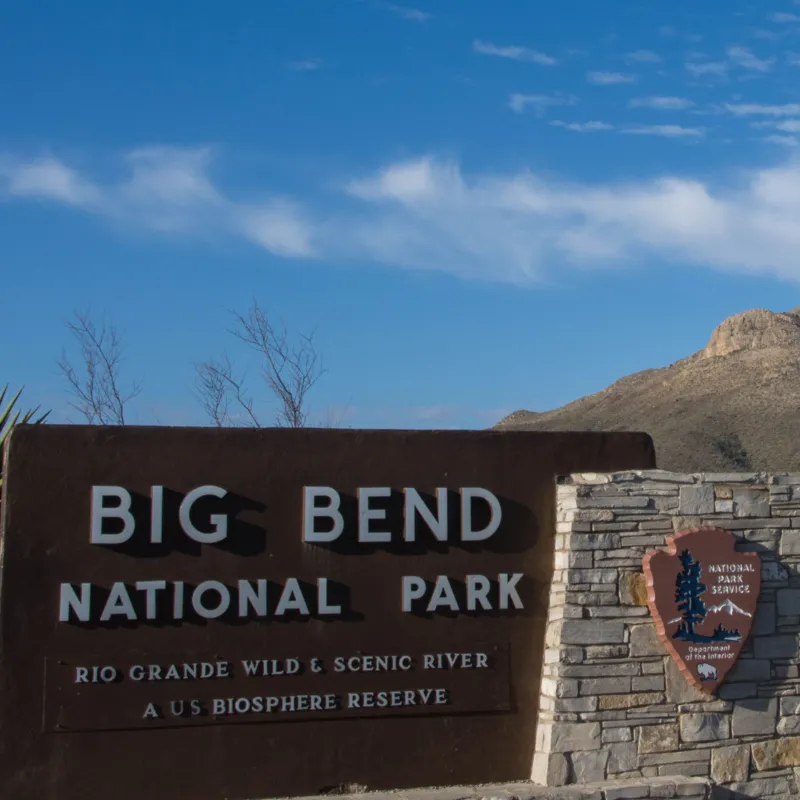
Best Time To Visit: Spring and Fall for Milder Weather and Active Wildlife
Big Bend National Park is a remarkable destination for budget wildlife watching, especially for those interested in unique desert fauna.
The park’s vast landscapes host a variety of animals from roadrunners and javelinas to elusive mountain lions.
Encompassing over 800,000 acres, Big Bend offers a dramatic mix of desert, river, and mountain ecosystems.
Its extensive history includes rich geological changes, ancient human habitation, and modern conservation efforts, making it a complex and intriguing environment for nature lovers.
Recommendations For Responsible Wildlife Watching
- Use binoculars to view animals safely and without interference.
- Avoid feeding wildlife to prevent unhealthy dependencies.
- Stick to marked trails to preserve sensitive desert habitats.
- Respect the park’s natural and archaeological sites by following all guidelines.
Tips For Planning A Budget Wildlife Watching Trip
Here are some tips for planning a budget wildlife watching trip:
- Choose Less Popular Times: Visit during off-peak seasons. You’ll save money and see more wildlife.
- Camp or Stay in Budget Lodging: Consider camping or staying in budget accommodations near wildlife areas.
- Pack Smart: Bring all necessary supplies to avoid buying expensive items at tourist spots.
- Use Public Transport and Carpools: Reduce travel costs by using public transportation or carpooling to remote locations.
- Research Local Resources: Learn about local guides, visitor centers, and conservation programs. They often offer free or low-cost tours.
- Buy a Pass: If you plan to visit multiple parks, consider a pass that covers entry fees for a year.
- Prepare Meals: Pack snacks and prepare meals to avoid restaurant costs.
- Follow Free Trails: Many natural reserves have free access trails. Use them for self-guided tours.
Safety And Ethics Of Budget Wildlife Watching Outline
When engaging in budget wildlife watching, especially in remote and lesser-known areas, it’s crucial to prioritize safety and uphold ethical standards to preserve the pristine condition of these environments. Here are some key considerations:
Safety Considerations
- Know the Area: Study maps and local guidelines before your visit. Knowing the terrain and wildlife habits can prevent unexpected encounters.
- Weather Awareness: Weather in remote areas can change quickly. Always check forecasts and prepare for extreme conditions.
- Emergency Preparedness: Carry a basic first aid kit, extra water, and means of communication. Some remote areas may have poor cell service, so consider alternative safety devices like a satellite messenger.
- Wildlife Distance: Always maintain a safe distance from wildlife. Use zoom lenses for photography to avoid close interaction.
Ethical Implications:
- Leave No Trace: Follow the ‘Leave No Trace’ principles to minimize your impact. This includes packing out all trash, staying on trails, and not removing any natural objects or artifacts.
- Respect Wildlife: Do not feed, touch, or harass wildlife. Feeding animals can alter their natural behaviors and endanger their health.
- Support Conservation Efforts: Many remote areas rely on visitor fees and donations for conservation. Contributing to these efforts can help maintain these habitats for future generations.
- Educate Yourself and Others: Learn about the ecosystems and species you are visiting. Share this knowledge responsibly without promoting over-visitations which might lead to degradation.
Final Thoughts
Exploring lesser-known wildlife watching spots is not only budget-friendly but also deeply enriching.
By choosing these destinations, you contribute to the preservation of diverse ecosystems while experiencing the wonder of nature up close.
Remember, the joy of wildlife watching comes with a responsibility—to respect and protect the natural world. Each visit should leave no trace and support local conservation efforts.
So, pack your binoculars, embrace the adventure, and immerse yourself in the serenity of these hidden gems.
Your mindful visits help ensure that these beautiful places remain vibrant and vital for generations to come.


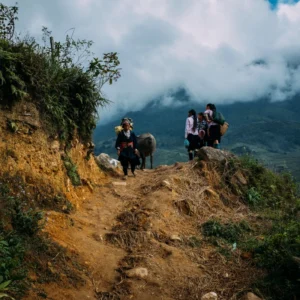
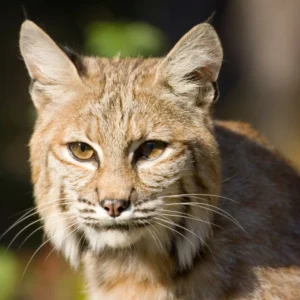
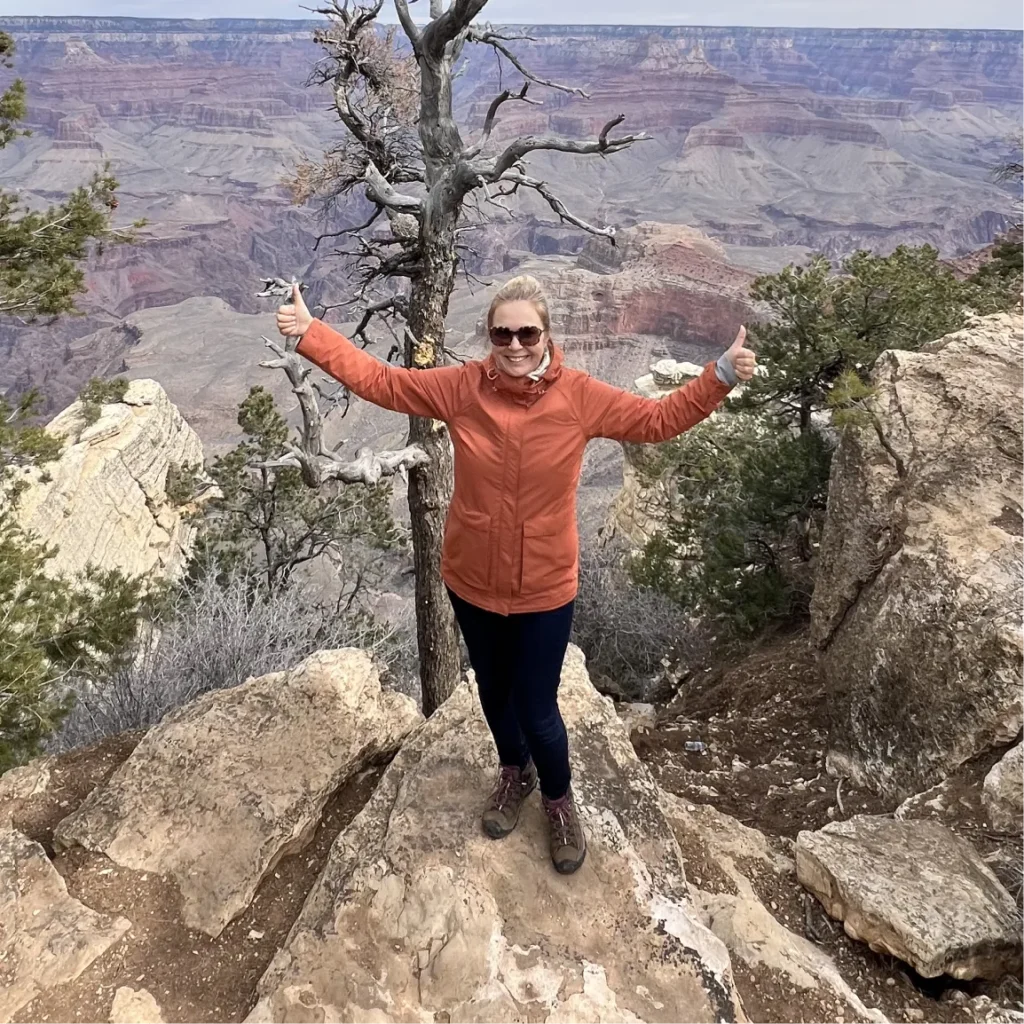



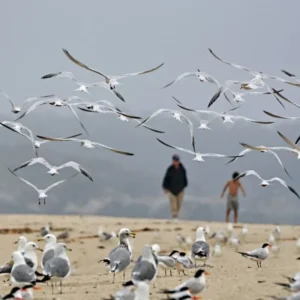


3 thoughts on “10 Amazing Budget Wildlife Watching Destinations Across The USA”
has anyone been to elkhorn slough during fall? read julia’s bit on responsible wildlife watching there and wonder if it’s worth the trip or too crowded. keen on birds and otters without disturbing them.
went last october, not too crowded and got to see lots of birds! definitely worth it for peaceful wildlife watching.
It’s hit or miss with crowds but always a good spot for birds. Mornings are quieter.